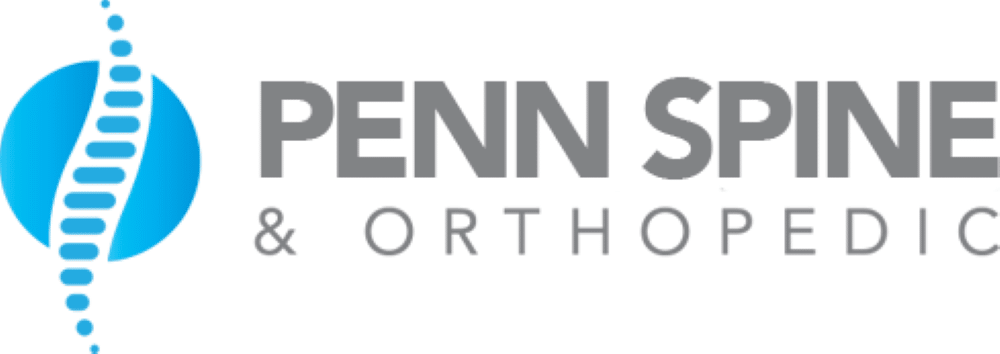The prevalence of back pain among adults has raised compelling questions about the potential benefits of lifestyle changes for mitigation and relief. Indeed, the role of daily habits, ranging from posture and physical activity to diet and stress management, is gaining increasing recognition in the discourse on back health. In the face of such growing interest, one might wonder, how can such modifications truly make a difference? What specific changes warrant consideration? How does mental health factor into this equation? Exploring these queries could unlock a new realm of solutions for those grappling with back pain.
Understanding Back Pain
A staggering majority of adults will experience back pain at some point in their lives, making it imperative to comprehend its causes, symptoms, and potential treatments. The origins of back pain can be traced to multiple factors including injuries, diseases, and age-related degeneration. Injuries such as sprains or fractures can occur due to poor lifting techniques or accidents, while diseases like osteoporosis, arthritis, and spinal stenosis can also lead to debilitating back discomfort. Age-related degeneration often results in conditions like disc herniation and spinal stenosis, adding to the complexity of back pain origins.
Pain management techniques are paramount when dealing with back pain. Over-the-counter pain relievers, heat or ice therapy, and gentle exercises are initial self-care strategies. If these prove ineffective, physicians may recommend physical therapy, prescription medications, or even surgery for severe cases. However, these techniques should be paired with lifestyle modifications, such as maintaining a healthy weight and quitting smoking, to reduce the risk of recurring back pain. Understanding the origin of your back pain and appropriate pain management techniques can greatly assist in alleviating discomfort and improving overall quality of life.
The Importance of Good Posture
Posture holds significant importance in the pursuit of back pain relief, with improper alignment often leading to exacerbation of discomfort. Identifying and correcting posture mistakes can prove instrumental in mitigating this issue. A focus on the benefits of maintaining an upright stance further underscores the role of posture in overall back health.
Correcting Posture Mistakes
In the pursuit of alleviating back pain, understanding and rectifying common posture mistakes stands as a vital component. The impact of technology is double-edged; while it may lead to sedentary lifestyles and poor posture, it also provides solutions like posture gadgets. These gadgets monitor our posture and provide real-time feedback, aiding in correcting our alignment.
Analyzing our daily routines for posture-damaging activities is crucial. Prolonged sitting, incorrect sleeping positions, and improper lifting techniques are common culprits. By identifying and rectifying these mistakes, we can mitigate the strain on our back muscles and spine, thus reducing pain. Remember, good posture is not just about standing tall; it involves maintaining a balanced body alignment in all positions and activities.
Benefits of Upright Stance
While it may seem trivial, maintaining an upright stance, or good posture, harbors numerous benefits, spanning from physical health to psychological well-being. This stance is not only important in daily routines but also in the choice of furniture. Upright furniture advantages include promoting better posture and reducing the risk of back pain.
Here are some key benefits to note:
- Enhanced Appearance: Good posture improves your stance, making stance-related fashion tips more effective. It can make you appear taller, more confident, and healthier.
- Health Improvement: Regularly maintaining an upright stance can reduce the risk of musculoskeletal issues and ease existing back pain.
- Mood Boost: Studies suggest a link between posture and mood, with upright posture potentially promoting positivity.
Adopting an upright stance is a simple way to boost overall well-being.
Regular Physical Exercise
Engaging in regular physical exercise is a proven method for alleviating and preventing back pain, promoting overall spine health and enhancing one’s quality of life. A crucial aspect to consider in this context is the exercise equipment selection. Opting for low-impact fitness gear, such as stationary bikes or elliptical machines, can help reduce strain on the back while still providing a comprehensive workout.
Weight lifting, when done correctly, can also build core strength that supports the spine. However, it is essential to use the right equipment and maintain proper form to prevent injury. Consulting with a fitness professional can provide valuable guidance in this regard.
Outdoor activities also offer substantial benefits for those suffering from back pain. These exercises, like walking, swimming, or cycling, involve the whole body and promote spinal flexibility without exerting excessive pressure. Furthermore, being in nature can boost mental health, providing an additional layer of relief from chronic discomfort.
Incorporating regular physical exercise into one’s routine can, therefore, offer significant relief from back pain. But remember, it’s not just about the type of exercise, but also about consistency and correct technique.
The Role of Diet in Back Health
The influence of diet on back health is a critical aspect to consider in the pursuit of back pain relief. Specifically, the nutrition we intake can directly affect the health of our spine, dictating its strength and resilience to strain or injury. Moreover, the incorporation of anti-inflammatory foods into our daily regimen can provide significant benefits, alleviating back pain symptoms and fostering overall spine health.
Nutritional Impact on Spine
In considering the various factors that contribute to spinal health, one must not overlook the significant role that diet plays in maintaining and improving back health. Incorporating ‘Spine friendly Cooking’ into your daily routine can have substantial benefits. The nutrients derived from a well-balanced diet can strengthen the bones, muscles, and discs in your spine.
However, it’s not always easy to get all necessary nutrients from food alone. ‘Supplement Usage’ can fill in these nutritional gaps, providing the body with the vital nutrients it needs to maintain the health and functionality of the spine.
- A well-balanced diet ensures optimal nutrient intake for spinal health.
- ‘Spine friendly Cooking’ can significantly improve your back’s health.
- ‘Supplement Usage’ provides essential nutrients that might be lacking in your diet.
Understanding the nutritional impact on the spine can help alleviate back pain and promote overall spinal health.
Anti-Inflammatory Foods Benefits
Opting for anti-inflammatory foods in your diet plays an indispensable role in back health, offering numerous benefits such as alleviating back pain and reducing inflammation in the spine. Consuming a diet rich in these foods has been linked to minimizing the intensity of chronic pain and enhancing overall wellbeing.
Inflammation fighting recipes, packed with antioxidants and essential nutrients, can help to neutralize harmful inflammatory processes. Incorporating natural anti-inflammatory supplements such as Omega-3 fatty acids and turmeric can further augment these benefits.

Importance of Hydration
How critical is proper hydration in managing back pain? The importance of maintaining adequate hydration cannot be overstated, particularly when it comes to managing back pain. Various hydration benefits are directly linked to alleviating back discomfort and promoting overall spine health.
One primary reason is that the spinal discs, acting as shock absorbers in our back, are mainly composed of water. A properly hydrated body ensures these discs function optimally, reducing the chance of back pain. Dehydration, on the other hand, can lead to disc degeneration and subsequently, discomfort.
Here are three key points to consider:
- Adequate hydration can help maintain the elasticity and flexibility of muscles and joints, reducing the likelihood of back pain.
- It aids in nutrient distribution across the body, including the back, promoting overall wellness.
- Water intake can help flush out toxins that could otherwise accumulate and cause inflammation, a common contributor to back pain.
As per water intake recommendations, drinking at least eight glasses of water a day is advisable. However, factors such as body weight, activity levels, and climate should be accounted for to ensure optimum hydration. Thus, hydration is not just crucial for general health but a strategic, proactive measure in managing back pain.
The Impact of Weight Management
Managing one’s weight is a critical aspect of mitigating back pain, with obesity often exacerbating the issue. A well-balanced diet not only aids in maintaining a healthy weight, but can also directly influence back pain. Furthermore, appropriate exercises can contribute to weight loss, thus lessening the strain on the back and potentially alleviating discomfort.
Understanding Obesity’s Role
In the realm of back pain relief, it’s crucial to comprehend the influential role of obesity and the consequential impact of weight management. Obesity, a prevalent health issue, not only instigates substantial physical discomfort but also triggers a range of psychological effects. These psychological impacts often include lowered self-esteem, depression, and anxiety.
Obesity related diseases also significantly contribute to back pain. These include:
- Diabetes, which can lead to a painful condition known as diabetic neuropathy.
- Osteoarthritis, a common consequence of obesity, which affects the spine and causes pain.
- Sleep apnea, often associated with obesity, results in poor sleep quality ultimately leading to chronic back pain.
Understanding these aspects is instrumental in devising effective strategies for back pain relief and overall well-being.
Diet and Back Pain
Undeniably, a well-balanced diet plays a pivotal role in weight management, consequently exerting a profound influence on alleviating back pain. Maintaining a healthy weight reduces the strain on the spinal column, leading to a decrease in back discomfort. Additionally, a diet rich in anti-inflammatory foods can aid in reducing inflammation that contributes to back pain.
Incorporating therapies like spinal massages benefits those suffering from back pain significantly. It eases muscle tension and improves blood flow, further aiding in pain management. Herbal remedies usage can also be beneficial. Certain herbs like turmeric and willow bark have been recognized for their anti-inflammatory and pain-relieving properties. However, before incorporating any changes in diet or therapies, consult with a health professional to ensure it’s safe and suitable for your specific condition.
Exercise for Weight Loss
Shifting focus to physical fitness, regular exercise emerges as an essential component in maintaining a healthy weight, thereby significantly mitigating the risks associated with back pain. A strategic blend of cardiovascular routines and intense workouts can be particularly effective.
- Cardiovascular routines: Activities such as swimming, cycling, or brisk walking enhance heart health and facilitate weight loss. Regular cardio can thus indirectly contribute to back pain relief by reducing weight-related strain on the spine.
- Intense workouts: High-intensity interval training (HIIT) can expedite weight loss. However, these exercises should be performed under guidance to prevent injury.
- Strength training: Incorporating resistance and strength training exercises can help build muscle, which in turn aids in weight management and spine support.
This multi-faceted approach to exercise for weight loss ensures a balanced, sustainable path towards alleviating back pain.
Benefits of Stretching and Yoga
Harnessing the power of stretching and yoga, individuals can significantly reduce back pain and improve their overall wellbeing. The benefits are multi-fold, specifically in promoting flexibility, strength, and mindfulness, all of which contribute to alleviation of discomfort.
For a more detailed yoga styles comparison, let’s consider Hatha and Iyengar yoga. Hatha is often recommended for beginners due to its slower pace, while Iyengar focuses on precise body alignment, using props like blocks and straps to assist in achieving the correct form, which is particularly beneficial for individuals suffering from back pain.
Stretching, on the other hand, can be enhanced with the use of stretching equipment essentials. These include resistance bands, foam rollers, and yoga straps, all designed to boost flexibility, improve range of motion, and ultimately, lessen back pain.
Research has shown that regular practice of both stretching and yoga can result in reduced need for pain medication, improved sleep, and a greater sense of wellbeing. Therefore, integrating these practices into your lifestyle can prove to be a therapeutic, non-invasive solution for back pain relief, offering a holistic approach to improving overall health.
Right Sleeping Habits
Adopting optimal sleeping habits is another crucial aspect to consider in the pursuit of back pain relief, as the position and quality of one’s sleep can significantly impact the severity of back discomfort. Two significant variables to pay attention to are sleeping positions and mattress selection.
One’s sleeping position should provide support for the natural curvature of the spine. Recommended sleeping positions include:
- Sleeping on the back with a pillow under the knees: This position can help maintain the natural curve of the back.
- Sleeping on the side with a pillow between the knees: This strategy can prevent the upper leg from pulling the spine out of alignment.
- Sleeping in a fetal position: This position can be beneficial for individuals with a herniated disc.
Mattress selection also plays a vital role in back pain relief. A mattress should provide support for the natural curves and alignment of the spine. The right mattress varies from person to person based on personal comfort, but a medium-firm mattress often works for the majority. Individuals with specific conditions like spinal stenosis may find a slightly firmer mattress more comfortable. Always consider professional advice when making such crucial decisions.
Stress Management Techniques
Undoubtedly, managing stress effectively plays a pivotal role in mitigating back pain, as chronic stress can exacerbate physical discomfort and tension in the body. Stress, whether emotional or psychological, can result in muscle tension and spasms, thereby aggravating back pain.
One promising approach to stress reduction is Mindfulness Meditation. This practice encourages focused attention on the present moment, fostering a state of calm and relaxation that can alleviate muscle tension. Research has shown that regular mindfulness meditation can significantly lessen the intensity of back pain and improve physical function.
Alongside meditation, building Emotional Resilience is another essential strategy. Emotional Resilience refers to the ability to adapt and bounce back from adversity, including stress or trauma – crucial for managing chronic pain. Resilience-building activities may include cognitive behavioral therapy (CBT), progressive muscle relaxation (PMR), and engaging in fulfilling hobbies.

Quitting Smoking and Back Pain
While it may seem unrelated at first glance, quitting smoking is a critical step towards alleviating back pain, as numerous scientific studies have established a definitive link between tobacco use and chronic pain.
Smoking’s toxins have damaging effects on the body, notably on the spine’s health. Nicotine’s effects include constriction of blood vessels and a reduction in blood flow to the soft tissues, both of which can lead to increased back discomfort and slower healing rates.
Here are three key points to consider:
- Smoking cessation reduces the rate of spine degeneration, offering a potentially significant improvement in back pain.
- Nicotine’s effects include impairing the body’s ability to deliver nutrients to the discs of the spine, leading to increased risk of degeneration and pain.
- Smoking’s toxins increase the body’s inflammation response, potentially exacerbating chronic back pain.
The Role of Mental Health
Inextricably linked to physical well-being, mental health plays a pivotal role in the perception and management of chronic back pain. Emotional resilience, the ability to adapt and bounce back from adversity, is a key component in this complex interplay. Individuals with greater emotional resilience tend to manage pain more effectively, displaying a higher pain tolerance and a lower tendency towards pain catastrophizing.
Mindfulness practices, such as meditation and deep breathing exercises, have also been shown to have a significant impact on back pain. By increasing awareness and acceptance of pain, these practices can help to reduce the psychological distress associated with chronic pain, leading to improved physical function and reduced disability. Moreover, mindfulness can enhance emotional resilience, providing individuals with the tools to better manage stress and anxiety, both of which can exacerbate back pain.
However, it’s important to note that while strengthening mental health can aid in back pain management, it does not replace the need for appropriate medical treatment. Mental health interventions should be seen as a complement to, not a substitute for, traditional pain management strategies. Therefore, the adoption of a holistic approach, integrating both physical and mental health strategies, is crucial for effective back pain relief.
Visiting Professionals for Back Pain
Building on the importance of a comprehensive, holistic approach to back pain relief, professional medical intervention often serves as an essential component of effective treatment strategies. Various health professionals provide non-pharmaceutical treatments that can offer both immediate and long-term relief from back pain.
Two such treatments are chiropractic adjustments and acupuncture. Chiropractic adjustments work by applying force to the spinal joint, correcting structural alignment and improving the body’s physical function. On the other hand, acupuncture, a traditional Chinese medicine technique, involves inserting thin needles into specific points on the body. This stimulates the nervous system, releasing chemicals into the muscles, spinal cord, and brain, which can effectively reduce or even eliminate back pain.
To make the most of these treatments, consider the following:
- Regularly schedule appointments: Consistency is key in these treatments. Regular visits can help maintain the benefits and prevent future pain.
- Open communication: Discuss your symptoms, pain levels, and any concerns with your practitioner. This can help tailor the treatment to your specific needs.
- Incorporate other lifestyle changes: Coupled with a healthy diet, regular exercise, and good sleep hygiene, these treatments can be even more effective.
Visiting professionals for back pain, if combined with other lifestyle adjustments, can be a significant step towards achieving long-term pain relief.
Frequently Asked Questions
What Are Some Natural Remedies for Back Pain Relief?
Natural remedies for back pain relief can include dietary changes, such as anti-inflammatory foods to reduce swelling, and yoga, which can enhance flexibility and strength, thus alleviating strain on the back muscles.
How Does Acupuncture or Chiropractic Treatment Help in Relieving Back Pain?
Acupuncture and chiropractic treatments provide back pain relief by restoring body balance and improving spinal health. Despite acupuncture risks like minor bleeding, chiropractic benefits often include enhanced mobility and reduced discomfort without invasive procedures or medications.
Can Certain Footwear Choices Contribute to Back Pain?
Yes, certain footwear choices can indeed contribute to back pain. The footwear impact on our posture and alignment is significant. Shoe selection that lacks proper support can lead to discomfort and exacerbate back pain.
How Does Pregnancy Affect Back Health and What Precautions Should Be Taken?
Pregnancy can strain the back due to increased weight and hormonal changes. Precautions include practicing prenatal yoga for flexibility and strength, and using ergonomic furniture to maintain good posture and alleviate pressure on the spine.
What Are Some Specific Exercises to Avoid That May Exacerbate Back Pain?
Certain exercises can exacerbate back pain, particularly those involving pain triggering postures. Heavy weight lifting, leg presses, squats, and sit-ups should typically be avoided. Additionally, improper desk ergonomics can significantly contribute to back discomfort.

